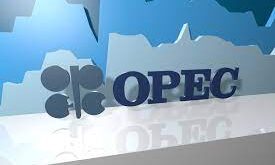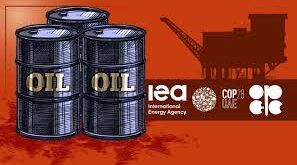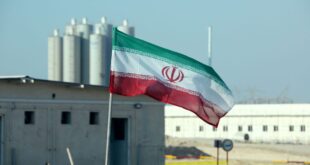OPEC and members outside of the oil cartel will struggle this year to form a policy as they exit a global oil output cut that has buoyed prices. but helped revive US shale oil production. a threat that will continue to hover over the market.
OPEC has been consistent in delivering cuts as part of the agreement struck in 2016. implemented from January 2017 and extended twice. first to the end of March 2018 and then till the end of this year. The historic agreement between OPEC and producers outside of the group led by Russia to cut production to the tune of 1.8 million barrels per day (bpd) has kept the price of Brent around US$50 levels and lowered the inventory glut.
Compliance among members of OPEC has been at a record high – at 100 per cent levels for some countries – with Arabian Gulf producers in particular eager to over-comply their allotted quotas. An unexpected nudge from the fall out over the Kurdish referendum and ensuing supply shocks from the Middle East oldest producing field at Kirkuk as well as disruptions to a North Sea pipeline pushed the price of Brent above $64 a barrel in early November and mid-December. Brent prices surged 17.7 percent last year to $66.87 as global inventories dipped.
While the oil markets generally had a good run in 2017. recovering from a gloomy start to 2016 when the price of Brent fell to just under $29 a barrel. the start of the new year is one of relative uncertainty for the oil markets.
Banks such as Goldman Sachs and Credit Suisse are forecasting the price of Brent to rise up to $62 and $60 a barrel in 2018. OPEC producers themselves would be comfortable with prices reaching $70 a barrel to balance budgets. says Dallas-based energy economist Anas Al Hajji. but would remain cautious to keep the prices within what he called “the shale band.“ The term refers to price range for WTI crude between $45 and $65 per barrel that can support US shale oil production. According to Swiss consultancy Petromatrix. which coined the term. US shale production has typically been seen to dip when prices fall below US$45. while price increases above US$65 cause a surge in output.
Shale producers. who have benefited from efficiencies built during the slump in oil markets. have already hedged their bets for 2018 to pump more when prices hit a sweet spot.
`Hedging contracts are about three months to one year. which means that [production] is going to come anyway no matter the price.“ Christof Ruhl. global head of research at sovereign wealth fund. the Abu Dhabi Investment Authority said at a conference in Dubai in December.
OPEC and non-OPEC producers who met at the end of November to rollover production cuts through 2018 will convene in June to review among other things how their response should be to shale and how to exit their current pact.
Already murmurs of dissent are coming from Russia. which is itching to exit the deal as soon as possible. While OPEC has had a smooth ride in 2017. leaving the deal may prove a bit of a challenge.
A decline in compliance may be a good thing for OPEC. says Mr Al Hajji.
“It prevents a sharp and sudden increase in prices and helps OPEC officially terminate the agreement by the end of the year.“ he told The National.
While some like Saudi Arabia have willingly undertaken production cuts throughout the year. and others such as the UAE and Kuwait have announced their monthly production cuts. others such as Venezuela have seen production fall for political and technical reasons.
OPEC policy for 2017 has been fairly straightforward but its strategy for 2018 and beyond is difficult to assess. The exporters group has made fairly sharp turnarounds. In 2014. it decided to keep pumping to squeeze out shale producers and then decided to aggressively cut production two years later.
“There is no clear or specific OPEC strategy towards US shale.“ said Bassam Fattouh. director at Oxford Institute for Energy Studies.
`In the $60–$70 price range. however. there is wide uncertainty regarding US shale output response with estimates varying between 700.000 bpd to above one million bpd for 2018.
`OPEC could decide to test US shale response further on the upside. but the response is more or less predictable: if OPEC pushes for a higher price. it needs to accommodate higher production from US shale to support prices.`
OPEC would strive to avoid a repeat of the excessive stock build-up that collapsed prices between 2015 and 2016 and at the same time deal with the threat of North American shale looking to dislodge them from markets in Asia. which have warmed up to US crude. Does that imply a careful consideration of further cuts. possibly extending into 2019?
`The shale revolution and OPEC reminded us: never say never.` said Mr Al Hajj.
 Iran Energy News Oil, Gas, Petrochemical and Energy Field Specialized Channel
Iran Energy News Oil, Gas, Petrochemical and Energy Field Specialized Channel




